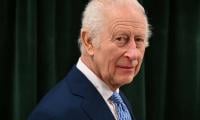The PTI’s so-called ‘final call’ for a march on Islamabad has unfolded as a disheartening saga of violence, political brinkmanship, and governmental incompetence. While the PTI may claim victory for reaching the capital despite the federal government’s confident assertions that it would not be allowed, the outcome is far from a win for any stakeholder. What could have been an exercise in democratic expression has once again devolved into a spectacle of anarchy, violence, and the misuse of state resources. The PTI’s march, led by Imran Khan's wife Bushra Bibi and backed by KP Chief Minister Ali Amin Gandapur, underscores the party's penchant for creating chaos. Mobilising provincial machinery and resources to facilitate the protest is a stark reminder of how the PTI blurs the lines between party and state. Meanwhile, the party’s failure to draw comparable support from provinces where it does not hold power exposes the limits of its nationwide appeal. The violence that accompanied the march, including attacks on media personnel and property further illustrate a rather aggressive and authoritarian tendency in the party that claims resistance, silencing dissenting voices with brute force rather than engaging in dialogue.
The federal government, for its part, has also failed to cover itself in glory. Its reliance on containers, roadblocks, and internet shutdowns has caused immense inconvenience to ordinary citizens, adding to the public’s frustration. By oscillating between overconfidence and panic, the government mismanaged the situation from the start. Declaring that the march would not enter Islamabad, only to be proven wrong, was a glaring misstep. The deployment of the military under Article 245, alongside unverified reports of shoot-on-sight orders, signals a dangerous escalation that could further erode public trust in state institutions. The government’s inability to anticipate the PTI’s tactics, despite years of watching its playbook unfold, is baffling. A smarter approach would have been to allow the march to proceed to a designated area, neutralising its spectacle and denying the PTI the opportunity to claim victimhood. Instead, by creating bottlenecks and taking repressive measures, the government inadvertently handed the party a narrative of resistance and persecution. The strategy of engaging the Islamabad High Court for legal measures or providing a designated protest space like Sangjani was suggested by many but ignored, to the government’s detriment.
The role of certain journalists and media outlets in propagating disinformation during this fraught time also deserves scrutiny. The erosion of credibility in journalism, driven by sensationalism and personal biases, has added fuel to an already volatile situation. Disinformation, whether aimed at discrediting either side, only serves to deepen polarisation and mistrust in society. At its core, this episode reveals a deep malaise in Pakistan’s political and governance systems. A protest that could have been an exercise in democratic dissent has turned into a dangerous game of brinkmanship, where the primary losers are the ordinary citizens caught in the crossfire. Both the PTI and the government must reflect on their conduct: one for weaponising chaos and violence, and the other for its ham-fisted response that has left it looking weak and unprepared. If Pakistan is to navigate its political crises effectively, all sides must abandon the politics of brinkmanship and focus on constructive dialogue and governance. Failure to do so will only deepen the fractures in an already divided polity.















